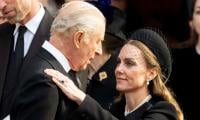When well-laid economic plans fail to deliver targeted growth rates, policymakers in Pakistan often fall back on a rhetorical comparison: “If Bangladesh can do it, why can’t we?” So it was no surprise that, during the recent tax compliance drive, a frustrated technocrat finance adviser questioned “if Bangladeshis can pay taxes, why can’t we?”
On the surface, the growth disparity is puzzling because both countries face similar development priorities, approached by similar finance management practices. Both countries are energy-deficient and under-industrialized. On the governance side, both have experienced prolonged periods of political instability, politics is highly polarized, public-sector corruption and crony capitalism are prevalent and tax compliance is similarly low, while delivery of state services leaves much to be desired. Yet Bangladesh’s growth outpaces Pakistan by a distance.
How has this come about? Some differences stand out, such as prudent economic management. External debt at 14 percent of GDP allows Bangladesh greater space for development finance from self-generated income while exports of $40 billion enable a manageable trade balance that underpins currency stability, creating a climate conducive for domestic and foreign investment.
Priority to human development is another area. Education, for instance, receives an allocation of 18 percent of the budget, with almost half for primary education. Annually the government distributes textbooks (350 million in 2019) free of cost to school students. Most government schools are co-educational with strong emphasis on sports and cultural activities, resulting in the emergence each year of young adults with science-based knowledge and the gender and religious tolerance necessary to integrate into a work-force suitable for the global supply chain.
Chairman Mao’s observation that “women hold up half the sky” echoes in Bangladesh, where opportunities provided by the garment industry to millions of women, many the sole family wage-earner, have upturned traditional gender roles. Micro-finance institutions condition female borrowers’ loans to their being functionally literate, many companies encourage employment of bicycle and motor-cycle riding women for customer interface and agricultural knowledge-dissemination in rural areas, creating gender-positive work opportunities.
These societal changes have impacted positively on Bangladesh’s birth control efforts (population of 160 million compared to Pakistan’s 205 million) that in turn facilitate food independence and allow increased per capita expenditure in social sectors such as mass immunization. But these initiatives by themselves would have been insufficient as growth engines if Bangladesh had strayed from its Founder’s strong commitment to a secular polity. Parties that propagate systems other than constitutional are disallowed from contesting elections, denying clerics the platform of politics from which to launch dogma- and legacy-based challenges to social and human development programs and foreign policies.
The result is a public mindset that views national affairs through a civic rather than spiritual prism. A combination of non-discriminatory education and cultural cohesion, nurtured by government pro-activity, ensures that Bangladesh is arguably the most inclusive for religious minorities among South Asian countries.
The denial of political space to religious fundamentalists assumes importance when viewed in Pakistan’s context, where governments more often than not have retreated in the face of demands by the pious, who have used militancy to discourage reforms. Moreover, their pressure for pursuit of adversarial external policies creates uncertainty both in regard to investment and to the permanence of Pakistan’s constitutional and social foundations.
Many believe that Bangladesh’s recent economic progress is owed to the political stability generated by its military’s refusal since 2009 to be provoked into regime change efforts, but the foundation is seen in an older governance stability, traceable to the 1990s, from when, despite political turmoil, all power centers have been on the same page regarding pragmatic social, economic and foreign policies.
Of course, in 2007 Bangladesh did experience an ultra-constitutional intervention designed to reduce political polarization but, while this could not take effect, it did produce two watershed moments for the country.
One was rare unanimity across the political spectrum to prevent the installation of a Nobel Laureate-led technocrat government, whose aid-fixated mindset would have taken the country deep into a debt trap. The other was the World Bank’s piqued reaction thereafter to withdraw loan commitments for the Padma Bridge mega-project, with the resultant mobilization of domestic resources greatly enhancing national self-belief and confidence in civil institutions.
Bangladesh has resisted the Rohingya refugees influx from being exploited as a Pan-Islamic issue and has deployed civil forces in the lead to prevent extremists from using its territory for internal and cross-border jihadist misadventures that would cause serious economic and social dislocation. Nor has the Bangladesh government felt the need to raise extra defence divisions to protect incoming foreign private investment.
Any analysis of why Bangladesh ‘can do it’ will reveal the critical role of political measures to support economic growth efforts. There is no quick fix. Rather, one sees commitment to multi-dimensional tasking – fencing of fundamentalism and militancy; religious moderation and cultural tolerance; continuity of economic and foreign policies mandated by elected government; an increasingly educated workforce with a large representation of women; economic cooperation and non-adversarial relations with neighbours. Such measures create a stable and attractive climate for domestic and overseas investment, from which flow job creation and economic growth.
Arnold Toynbee categorized nations into those that seek inspiration from the past and others that look to the future. In Pakistan the two-rupee coin carries an image of the 17th century Badshahi Mosque, while Bangladesh’s two-taka coin shows a boy and a girl holding a book, illustrating the divergent paths towards economic advancement being taken by the two countries.
The writer is a development consultant who in recent years has been observing first-hand the rapid transformation of Bangladesh society.
Email: txtsolaris5@gmail.com















